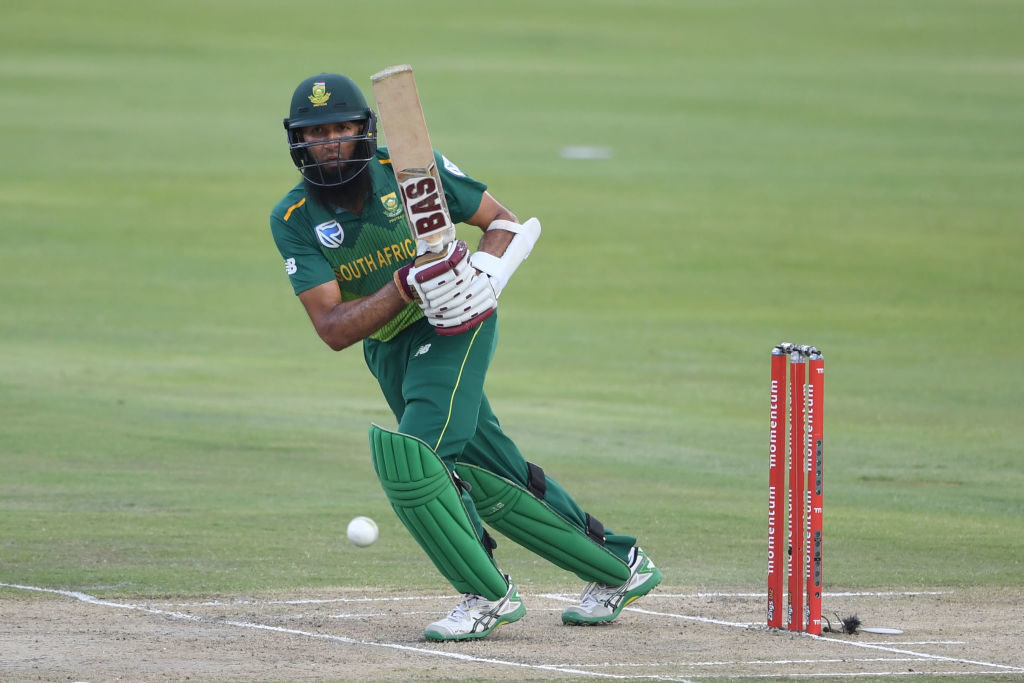Hashim Amla copped some flack for ‘slow scoring’ in the first ODI at St George’s Park, but Pakistan’s superb 317-6 at SuperSport Parks offers the ideal blueprint how to put a big score together, writes SIMON LEWIS.
Too many fans have a cookie cutter mentality towards cricket, but they forget that the players are human beings playing a highly technical mental and physical game on an ever-varying pitch. And with changing weather conditions this can shift the balance of play numerous times during the course of a day’s play.
When the players start taking public criticism to heart – and change their game plans as a result of these comments – it can have a detrimental effect on their future performances. There is a school of thought that advises players not to read any mass media or social media because of the fear that these comments can mess with their head space.
While this is a solid policy in general, being open to hearing the thoughts of the media and public can offer players and coaches great food for thought, and insights that they might not otherwise have reached themselves. The trick is to have the mental courage of your convictions to be able to recognise when someone has an axe to grind (or wants some other player to take your place in the side!) or even if they were the type of persons who simply like to troll and show dislike for everything on the internet, rather than trying to add some value.
READ ALSO: 438 hero Gibbs shocked at ‘go-slow’
In the second ODI at Kingsmead, the Proteas’ top order (chasing just 204 runs for the win) collapsed to 29-3 as Reeza Hendricks (five runs, with one four), Amla (eight runs, two fours) and Faf du Plessis (eight runs, two fours) appeared pumped to hit boundaries. Of course, it could be accidental that they hit 20 of their combined 21 runs in fours, with Amla (180.00) and Du Plessis (100.00) hitting high strike rates in their brief innings.
However, in the context of the public outcry over ‘slow, selfish Amla’ in the first ODI at St George’s Park, it appeared from a distance as if they were trying to overcompensate for the side’s slow scoring in the previous ODI. Result? The Proteas were reduced to 29-3 before Rassie van der Dussen (S/R 65.04) and Andile Phehlukwayo (S/R 86.25) took their side to victory with pretty modest strike rates compared to those achieved by Amla and Van der Dussen at St George’s Park.
In the recent ODI series away to Australia in November 2018, the first match was won by the Proteas at a canter after the Aussies folded for 152 in under 40 overs. The Proteas then lost the second ODI after starting on fire, before losing four wickets by the 15th over. That made recovery difficult as the remaining batsmen had to preserve their wickets with greater care, and as a result their run rate tailed off from around five an over after 25 overs down to around the 4.5 run mark. The continual fall of wickets naturally created uncertainty and caution among the surviving batsmen, and would have given a much-needed boost to the Aussie bowlers.
READ ALSO: The upsides of ODI loss to Pakistan
The third ODI was played on a perfect batting track and on a smallish field in Hobart with the series level 1-1, but the Proteas wisely batted with care through to the 25th over, at which point they were batting at under four runs to the over, but still had seven wickets in hand. From that solid foundation they were able to accelerate the scoring almost every over to finish a shade under 6.5 runs to the overs, as Du Plessis and Miller both scored outstanding centuries to set up a fairly comfortable win and secure the series 2-1.
While you can’t expect two batsmen to always bat through to the end of an innings in such a decisive manner, having seven or eight wickets in hand for the last 25 overs offers the batsmen a great buffer to allow them to up the scoring rate without worrying that the loss of their wickets will allow the opposition bowlers to get stuck into the tail.
Imam-ul-Haq’s 101 at SuperSport Park came off 116 balls which was a SLOWER strike rate than Amla’s 108 or Van der Dussen’s 93 at St George’s Park, yet Pakistan side still went way past 300. Different match situation, different track, but there’s a valuable lesson in there.
Such anchoring contributions add as much value to the scorecard as they provide a bulk of runs that sets the innings up perfectly for one or two bigger hitters to weigh in with rapid 30s or 40s that can push the score up from a decent run rate to one that is highly competitive. The value of a solid foundation is priceless in ODI cricket, but creating a panic among the entire batting lineup to score at 100 runs/100 balls right from the get-go can be a recipe for disaster.
Although many people find comfort in recipes that call for set quantities, Mother Cricket often rewards players and fans with far more delicious treats when we chuck out the cookie cutter mentality and go with the flow, and enjoy watching how players react to different situations and challenges. The game is hard enough without expecting the players to be robots – besides, if cricketers were robots, the only changes we’d ever see in a team would be oil changes, and I doubt that would keep fans riveted to the action.
Photo: Lee Warren/Gallo Images/Getty Images







